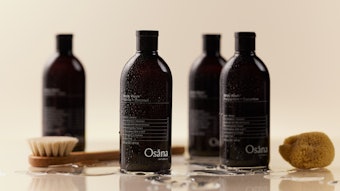Read more information on this subject.
The Hair Equation on the Shelf
According to Euromonitor, the hair care category grew by 3.2% in 2006, with a wide variety of product launches impacting the above average growth. While customers spent more on hair care products, manufacturers tapped into the trend by introducing line extensions to existing brands that promised “better results at a tolerably higher price point.” Further growth was triggered by an increase in professional hair care products, which have a higher price point and are “believed by consumers to be of better quality,” according to Euromonitor. Hair care also experienced price increases as a result of premium mass product introductions and continued diversion. The global hair care market in 2006 was placed at close to $53 billion, and is forecast to reach $60 billion by 2011. In the U.S. alone, total hair care was valued at $10 billion. With styling, conditioning and coloring recurrent as strong revenue generating segments, and specialized line extensions adding appeal for consumers, the competitive landscape is dominated by brands whose success appears to be leveraged by positioning and specific result orientation.
Technological Drivers
Developments that enhance hair styling options in addition to fostering healthy, shiny hair are driving hair care product diversity.
“The healthy hair look is high on the list of consumer priorities,” said Kathy Maurer, hair care marketing manager, National Starch Personal Care. “The more new formulations can support the perception of healthy hair, the more likely it is that consumers will adopt them as part of their daily styling regimen. As an example, styling products with conditioning benefits built into the formulation are now widely accepted by millions of consumers around the world.
“One of the greatest challenges in formulating new products for healthy looking conditioned hair is the ongoing change in consumer lifestyles. People are working longer hours, taking on longer commutes and scheduling a larger number of activities in a day. For these reasons, new product formulations that address the 24-hour-a-day lifestyle trend will potentially be big winners in the marketplace going forward,” added Maurer.
“Technology for hair care products has evolved significantly over the past two decades, allowing the market to grow and offer a range of differentiated products designed for the distinctive hair structure and grooming techniques of various consumer groups,” said Beth Johnson, senior industry specialist and global hair care technology leader, Dow Corning. “Silicones have played a major role in product development, in part because of their ability to reduce wet or dry combing force, increase shine and provide soft feel, all without tackiness or residue.”
In response, formulators have created a category of clear, mild and light-conditioning shampoos that avoid damage and restore the hair’s original conditioned appearance, while providing a gentle cleaning.
Consumers have also come to realize that hair damage is not simply a consequence of styling, coloring, heating and straightening treatments. Repeated washing, drying, brushing and combing can also damage cuticles. As a result, consumers seek solutions that restore the overall condition and strength of their hair, and seek products that protect and make hair more resilient, as well as shiny and healthy feeling—and they expect product performance.
At the Society of Cosmetic Chemists Suppliers’ Day, National Starch Personal Care announced a technology and product development initiative to support manufacturers of hair care products in their efforts to meet this consumer demand.
“The goal of this initiative, called Beautiful & Beyond, is to deliver innovative product concepts, consumer and sensory research, and higher levels of value in customer formulations designed for this fast-growing market segment,” said Maurer. “We believe the look of healthy hair is one that will not go out of style any time soon. Technologies that support benchmark performance attributes in areas such as conditioning, shine, frizz elimination, high humidity resistance, protection from chemical treatment and heat styling aids will also be considered.”
National Starch envisions the future of personal care ingredient suppliers as one in which the supplier must offer increasingly customized versions of technology combined with formulating assistance and consumer and sensory science to speed commercialization of products and increase the odds for success.
In addition, trends—such as the emerging need for longer-lasting formulas presents manufacturers with an opportunity to create products that deliver greater value to the consumer and, therefore, command premium pricing.
Clearly, special hair care needs, and a consumer population that has come to expect real results, continue to drive this dynamic market. Specific hair care needs are driving the creation of targeted products—whether technology based, nature-bound or a combination thereof—in this dynamic market.
Explore how brands are bottling and delivering the answers to these demands in
The Hair Equation on the Shelf.










